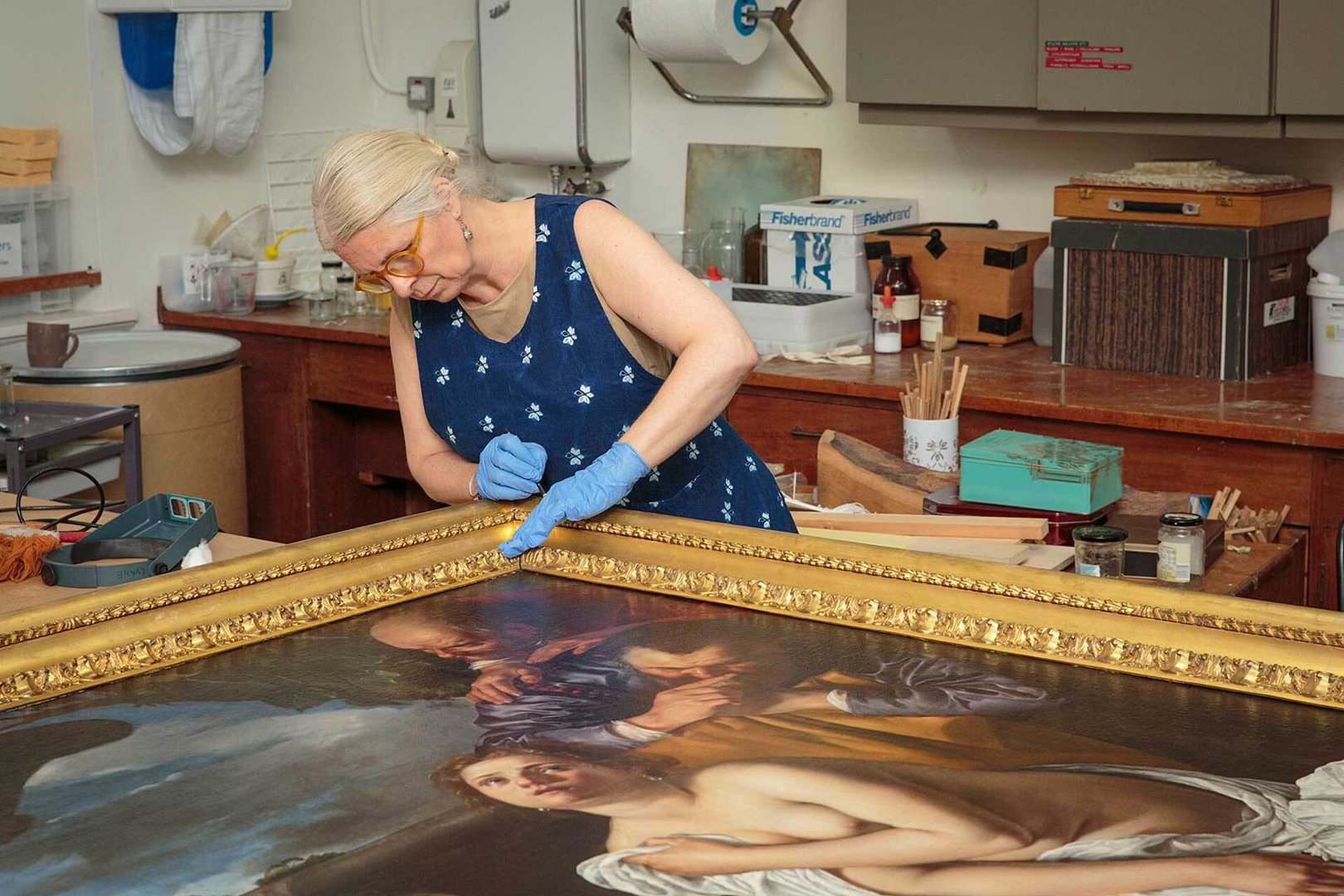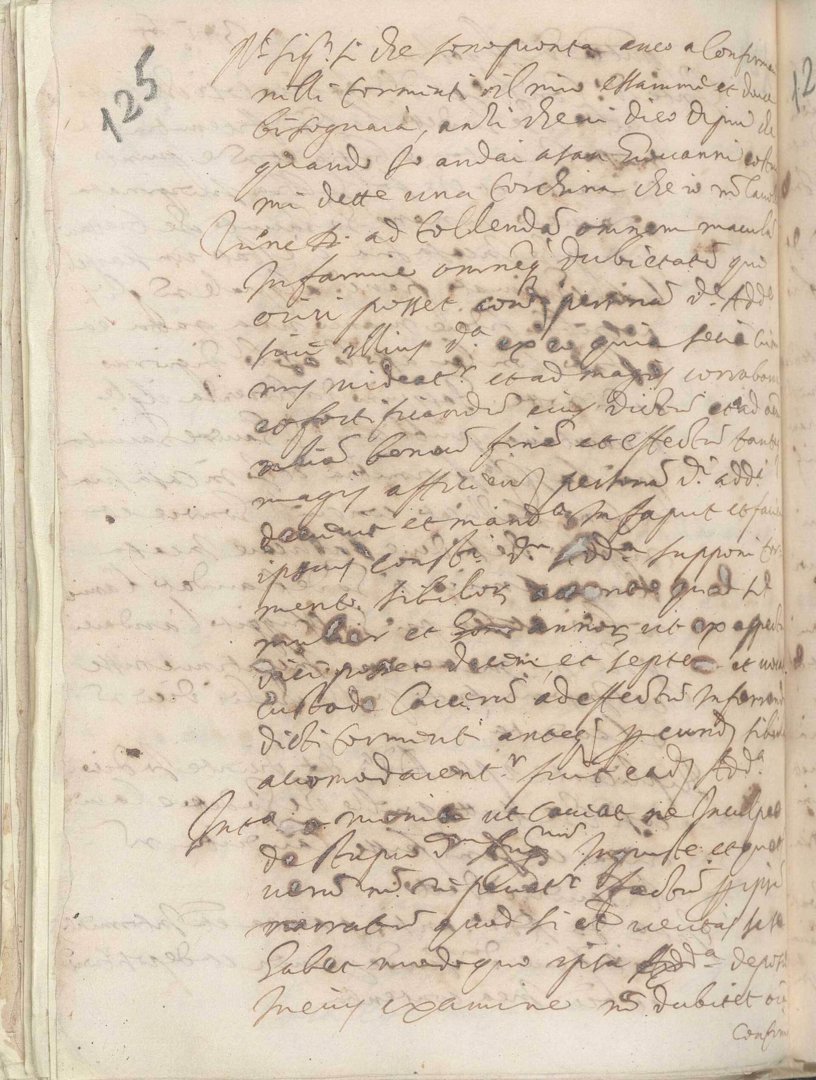New dates announced for postponed Artemisia Gentileschi exhibition
Artemisia opens 3 October 2020
Issued July 2020
One of the biggest disappointments resulting from the National Gallery's shutdown for 111 days due to coronavirus was the postponement of the eagerly anticipated major monographic exhibition exploring the work of Artemisia Gentileschi (originally scheduled for 4 April – 26 July 2020).
Today, the National Gallery is delighted to announce that thanks to the generosity of its lenders, Artemisia has been rescheduled to open this autumn. It will now open on 3 October 2020 and run until 24 January 2021.
There is also an additional loan that will be joining the exhibition – the original transcript of the trial in which the artist Agostino Tassi is charged with ‘deflowering’ Artemisia Gentileschi (1612), on loan from the Archivio di Stato, Rome (pictured below).
This is the first time the transcript will ever have been seen in public, despite it being referred to frequently in discussions concerning Artemisia's early life in Rome and in relation to her rape and the subsequent trial.
The transcript of the trial, written partly in Latin but with spoken responses noted verbatim in Italian, will be displayed with its pages open at Monday 14 May 1612. Artemisia has been brought to face Tassi at the Tor di Nona prison in Rome. The officials, generally sympathetic to the Gentileschis’ cause, ask Artemisia if she is willing to confirm her earlier statement under ‘judicial torture’. This was an accepted means by which testimonies could be incontrovertibly established as ‘true’. Artemisia, understanding the necessity of this ordeal to validate her claims, agrees to comply: ‘Yes sir I am ready to confirm my testimony again under torture and wherever necessary.’
The torture chosen was the 'sibille', a system of cords looped around the fingers and tightened. As the prison guard administers the torture, Artemisia utters the famous words: ‘È vero è vero è vero’ (‘It is true, it is true, it is true, it is true.’)
Along with a number of her recently discovered personal letters (Archivio Storico Frescobaldi, Florence), which have been especially conserved for the show, the trial transcript will offer visitors an opportunity to ‘hear’ Artemisia’s voice and enable us to appreciate her vulnerability, wit and resilience.
Preparations for the exhibition are now well underway at the National Gallery – above, frame conservator Isabella Kocum is pictured tending to the frame of Artemisia's 'Susannah and the Elders' (1622; The Burghley House Collection), one of the highlights of the upcoming show.
The exhibition is curated by Letizia Treves, the National Gallery James and Sarah Sassoon Curator of Later Italian, Spanish, and French 17th-century Paintings. She says: 'Artemisia was a survivor. She overcame rape, torture, humiliation and prejudice to become one of the most successful artists of her time. I was bitterly disappointed when we had to postpone the exhibition but I’m enormously grateful to our lenders for enabling it to go ahead. It's been a long time coming, but Artemisia will finally get her moment in the spotlight and I can't wait to share her story and paintings with visitors.'
Dr Gabriele Finaldi, Director of the National Gallery, says: 'I am thrilled that Artemisia will open to the public in October after the coronavirus postponement. It will be a revelation for many to discover her powerful paintings and to get to know her story both from her art and from the biographical documents that will be seen in public for the first time.'
Tickets for Artemisia will go on sale in due course - subscribe to our emails to hear the latest news.
Exhibition sponsored by

Supported by
The Thompson Family Charitable Trust


J Paul Getty Jr Charitable Trust
Katrin Henkel
And other donors
NOTES TO EDITORS
ABOUT THE EXHIBITION
For the first time in the UK, a major monographic exhibition will explore the work of Artemisia Gentileschi (1593–1654 or later).
The inspiration for this exhibition is the National Gallery’s acquisition of Artemisia’s Self Portrait as Saint Catherine of Alexandria (about 1615–17), the first painting by the artist to enter a UK public collection.
At a time when women artists were not easily accepted, Artemisia was exceptional. Her career spanned more than forty years and she gained fame and admiration across Europe, counting leading rulers among her patrons. She was the first woman to gain membership to the artists’ academy in Florence.
Although Artemisia was greatly admired during her lifetime, she was essentially rediscovered in the 20th century. Certain elements of her biography – particularly her rape as a young woman and the torture she endured during the trial that followed – have sometimes overshadowed discussions about her artistic achievements, but today she is recognised as one of the most gifted painters of the Italian Baroque period. Her art and life continue to inspire novels, films, documentaries, musical and theatrical productions.
'Artemisia' will present a highly selective survey of the artist’s career, bringing together around thirty of her works from both public institutions and private collections around the world, along with letters and contemporary documents - the majority of the loans in the exhibition have never been seen in the UK before.
Images
Preparations are already underway at the National Gallery as frame conservator Isabella Kocum tends to the frame of Artemisia Gentileschi's 'Susannah and the Elders' (1622; The Burghley House Collection), one of the highlights of the upcoming show © National Gallery, London
Proceedings of Agostino Tassi's trial for the rape of Artemisia Gentileschi, 1612, Manuscript Tribunale del governatore_Processi_sec XVII_104, f.341v.-f.342r © Archivio di Stato di Roma
For further information, please contact the National Gallery Press Office on press@ng-london.org.uk
Publicity images can be obtained from https://press.nationalgallery.org.uk/


